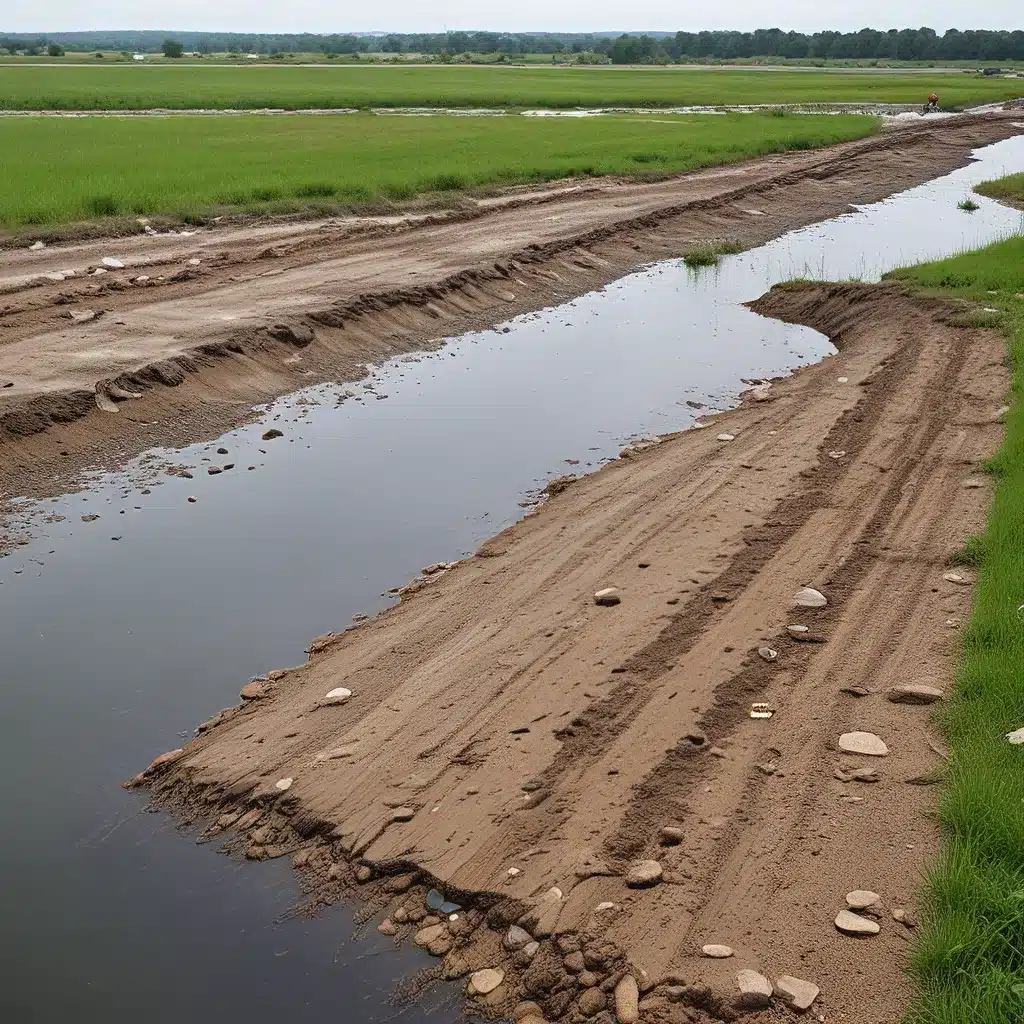
Uncovering the Hidden Gems of Sustainable Remediation
As an environmental enthusiast, I’ve always been fascinated by the intricate dance between environmental protection and economic progress. It’s a delicate balance, and one that’s at the heart of sustainable remediation practices. You see, when it comes to cleaning up contaminated sites, it’s not just about neutralizing the pollutants – it’s about doing it in a way that benefits the community, the environment, and the bottom line.
Let me take you on a journey through the world of sustainable remediation, where we’ll uncover the hidden gems that can transform a cleanup project into a true win-win scenario. But first, we need to understand a critical concept: the triple bottom line.
Mastering the Triple Bottom Line
The triple bottom line is the idea that a successful project must consider not just the environmental impacts, but also the social and economic consequences. It’s a holistic approach that recognizes that true sustainability doesn’t happen in a vacuum.
As the experts at the Interstate Technology and Regulatory Council (ITRC) explain, sustainable remediation is about more than just “greening” the cleanup process. It’s about ensuring that the project serves the needs of the community, while also being economically viable in the long run.
Imagine you’re tasked with cleaning up a contaminated site in a low-income neighborhood. Sure, you could focus solely on the environmental aspects, but what about the social and economic impact? How will the cleanup affect the residents’ quality of life? Will it create new job opportunities or increase property values? These are the kinds of questions that sustainable remediation practitioners must consider.
Unlocking the Hidden Benefits
One of the key aspects of sustainable remediation is the pursuit of what the ITRC calls “hidden benefits.” These are the social, economic, and environmental perks that often go overlooked in a traditional cleanup project.
For example, the experts explain that a sustainable remediation project might incorporate green infrastructure, like bioswales or permeable pavement, that not only manages stormwater runoff but also provides recreational spaces and improved air quality for the community. Or, a cleanup might be integrated with a larger redevelopment effort, unlocking opportunities for affordable housing, job training programs, or community-driven revitalization.
It’s all about taking a step back and considering the broader impact of your actions. By thinking creatively and collaborating with stakeholders, you can uncover these hidden gems that can truly transform a project from a necessary evil into a source of community pride and resilience.
Engaging the Community
Of course, unlocking those hidden benefits requires a deep understanding of the community you’re serving. That’s where stakeholder engagement comes into play.
As the Minnesota Pollution Control Agency highlights, robust stakeholder engagement is crucial for achieving meaningful outcomes in environmental justice communities. It’s not enough to simply impose a cleanup plan on a neighborhood – you need to work hand-in-hand with the people who live there, understanding their needs, concerns, and aspirations.
This can be a challenging process, as communities may be understandably skeptical of government or corporate involvement in their backyards. But by fostering trust, transparency, and a genuine spirit of collaboration, you can unlock a treasure trove of insights that can shape the project in ways you never imagined.
Sustainable Remediation in Action
Let’s take a look at a few real-world examples of sustainable remediation in action, where the hidden benefits shined through:
The Phoenix Park Project in Camden, New Jersey: This former industrial site along the Delaware River was transformed into a vibrant community park, complete with green infrastructure like bioswales and wetlands. By incorporating the needs and desires of local residents, the project not only addressed environmental concerns but also provided much-needed recreational space and stormwater management capacity for the city.
The Shaffer Paper Site in Boston, Massachusetts: What was once a contaminated industrial area is now the Senator Joseph Finnegan Park, a 12-acre waterfront oasis along the Neponset River. The collaborative approach, which involved environmental consultants, landscape architects, and the local community, ensured that the cleanup resulted in a beautiful, resilient, and community-centric space.
The Harrison Avenue Landfill in Camden, New Jersey: This former municipal landfill has been transformed into a vibrant community center and public park, complete with wetland restoration, a living shoreline, and recreational amenities. By working closely with the Cramer Hill neighborhood and various government agencies, the project has become a source of pride and a hub of community activity.
These examples illustrate the power of sustainable remediation – how it can transform a cleanup from a necessary burden into a community asset. And the best part? The benefits don’t just stop at the site’s boundaries. These projects have the potential to ripple outward, creating a more resilient and vibrant environment for all.
The Future of Sustainable Remediation
As we look to the future, the importance of sustainable remediation practices only continues to grow. With the looming threats of climate change, environmental justice concerns, and the ever-present need for economic development, the triple bottom line approach is more crucial than ever.
As the experts at the Sustainable Remediation Forum (SURF) point out, sustainable remediation can help communities adapt to the challenges posed by a changing climate, mitigating risks and unlocking new opportunities for resilience. And by prioritizing the needs and values of marginalized communities, we can work to address the longstanding environmental injustices that have plagued so many neighborhoods.
So, the next time you hear about a cleanup project, I encourage you to dig a little deeper. Look for the hidden gems – the community benefits, the economic opportunities, the environmental co-wins. Because when we embrace the principles of sustainable remediation, we’re not just cleaning up a site – we’re building a brighter, more resilient future for all.
And who knows, maybe your next visit to Inland Waters Inc. will be to a transformed site that’s become the pride of the community. Now, that’s what I call a job well done.


